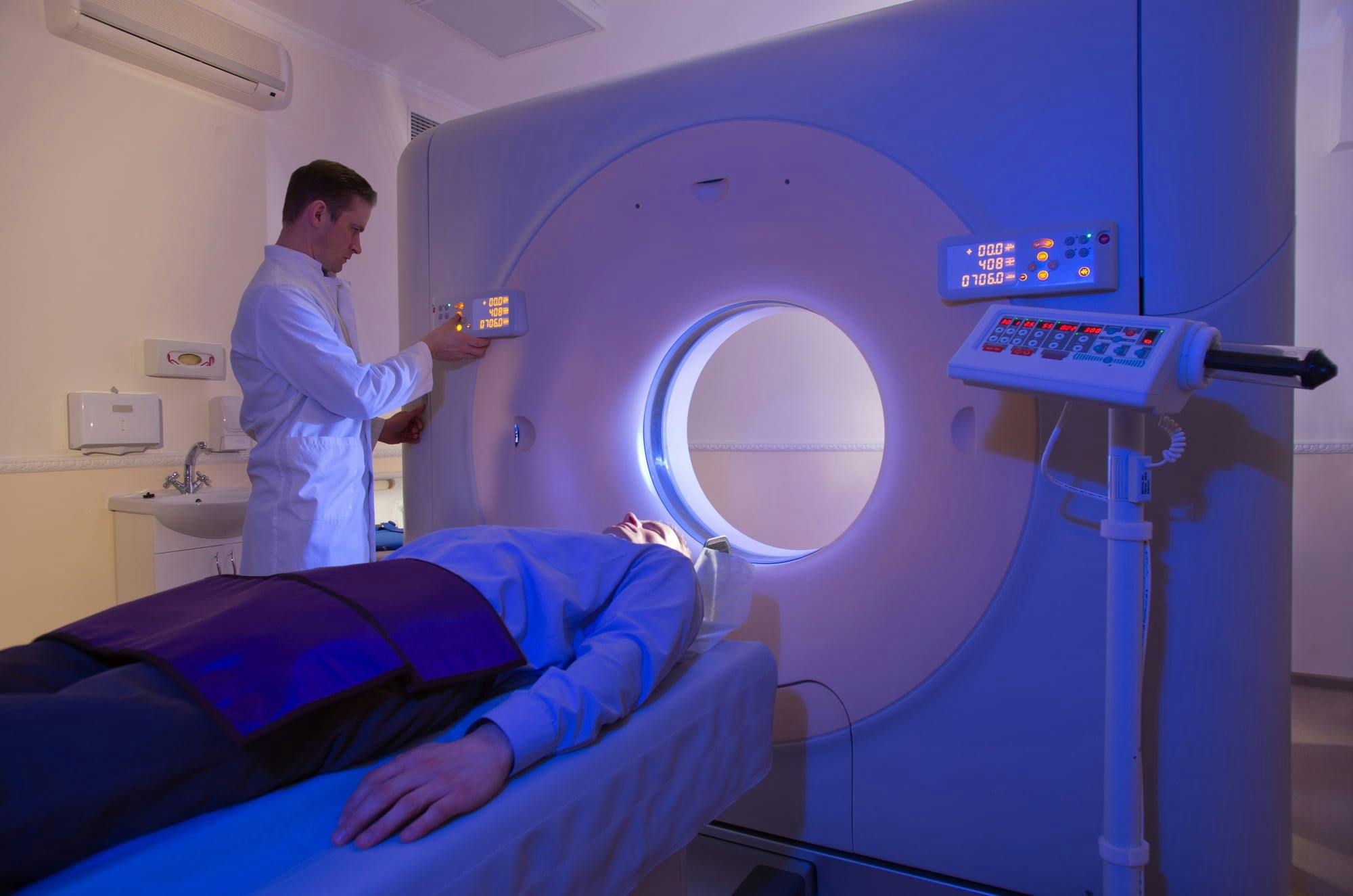
2019-10-15T16:28:57
What is the Difference Between Diagnostic, Therapeutic and Interventional Radiology?
- Imaging
- Radiation Oncology
- Radiology
November 2, 2016 | Radiology
Specialties:Radiology

Of all the advances in modern medicine, our ability to map the human body is perhaps the most remarkable. A screen only capable of showing moving images without sound was cutting-edge technology roughly 100 years ago. Imagine telling a doctor from that time that those screens can now produce real-time images from inside the human body. He might have diagnosed you as borderline psychotic!
These advances have represented far more than a marvel of society’s progress, though. Doctors’ increased ability to see beneath the skin has many benefits. They can detect simple maladies like a broken bone or even life-threatening conditions like cancer and brain disease.
Doctors who specialize in various imaging techniques are practicing in a field known as “radiology,” named for how often radiation is involved in this process.
The simplest form of imaging is the X-ray. In this procedure, tiny amounts of radiation pass through the body to produce an image based on objects the radiation encounters. Dense objects like bones appear in different colors than lighter objects, allowing doctors to view a template of what’s going on inside the affected area. Even in cases that require advanced testing, an X-ray is often the first line of defense.
For many conditions, though, more testing is needed. Let’s take a look at a few of the most common forms of imaging within the radiology field.
A computerized tomography scan, often abbreviated as “CT scan,” uses X-ray technology. Instead of a single X-ray, however, CT scans combine numerous X-rays taken from different positions, and use advanced computer technology to create more detailed images.
The benefit here is clear: it’s easier to see every detail of an object when you can view it from multiple angles. Think of the difference between a 2D image and a 3D image, and you’re on the right track. CT scans pick up many of the same things as simple X-rays, but do so in a more detailed and precise manner. CT scans can be particularly beneficial for detecting smaller items like tumors and cancers, or for identifying and monitoring internal bleeding.
X-rays and CT scans can’t be used carte blanche, however. The body only has a certain tolerance for radiation, and it can be put at risk with overexposure. Radiologists understand these limits, though, and consult with any patient who might need these procedures.
Magnetic resonance imaging (MRI) is one type of imaging that doesn’t use radiation. Instead, it relies on a combination of magnetic force and radio waves. These combine to produce a different type of image than what X-ray technology creates. MRIs and X-rays are similar, however, in the sorts of disorders they can help identify.
Because MRI tests are effective for injuries like torn ligaments or broken bones, they are often used as a testing measure in professional sports. They can even be used as a follow-up to an X-ray or CT scan to help your doctor see more detail. There are also circumstances where MRI’s are more useful for detecting tumors or clots.
Although MRIs don’t use radiation, the procedure isn’t without risks or a lengthy preparation process.
Positron emission tomography, or a PET scan, is a form of imaging which uses small particles entered into the bloodstream as a way to view bodily organs. The flow of blood within the body is used as the delivery mechanism. During a PET scan, your radiologist will inject liquid containing small amounts of radiation into a vein, where it then spreads throughout the bloodstream. Because blood usually collects near affected organs in the body, most of this liquid will do the same. From there, your radiologist will pass a scanner over the body which is programmed to pick up radiation in the blood. The images produced are then transmitted to a computer for viewing.
PET scans are especially useful for organ- and blood-related disorders and they’re also used to document brain activity (including diagnosing Alzheimer’s disease and epilepsy). They aren’t typically the first approach for detecting cancer, but they’re often used to help test various forms of treatment once a diagnosis has been made.
Because the images produced by a PET scan are less detailed than those from CT scans or MRIs, your radiologist may use something called a PET-CT scan. This test is just what it sounds like: it combines the images provided by PET scans and CT scans to give a more accurate picture. PET-CT scans are common for cancer identification.
Risks of PET scans are similar in nature to X-rays and CT scans because of the radiation used, but the amounts are small enough that these concerns are minimal.
If you have any concerns with your heart health, text or call your Revere Health radiologist to discuss treatment options.
WRITTEN BY:
The Live Better Team

2019-10-15T16:28:57

2019-06-06T10:36:51

2017-12-26T11:52:27

2017-12-19T14:36:02
This information is not intended to replace the advice of a medical professional. You should always consult your doctor before making decisions about your health.